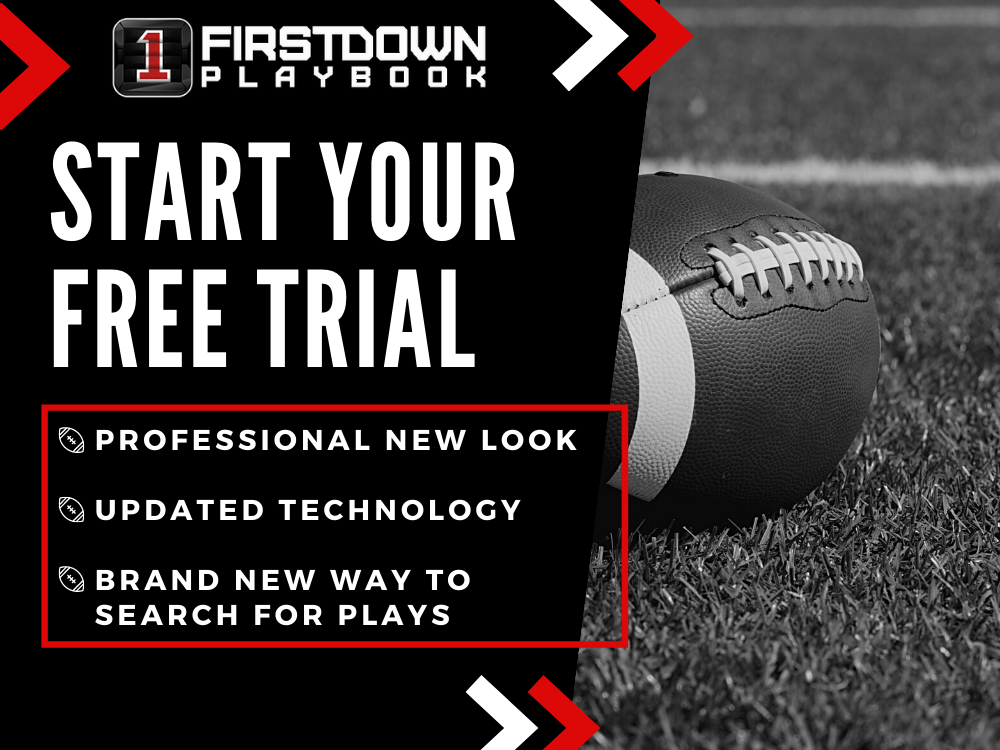Communicating Man Vs Zone Coverage
Yesterday we looked at the importance of your quarterback and receivers being on the same page with recognizing man vs zone coverage. Today we want to look at some of the non-verbal communication that takes place as the route concepts are unfolding. It is not enough to see the same thing. These two should communicate man vs zone coverage.
How do you keep the quarterback and receiver on the same page? This is very important. If the receiver thinks it is man coverage and the quarterback reads it as zone then there are all kinds of things that can go wrong. Other than giving your quarterback and receiver similar keys to read man vs zone coverage, here is a great way to teach it on this play.
It’s All In The Eyes…
As we talked about before, every route is run as a man coverage beater until it is not. As the quarterback takes his drop and goes through his progression read he is going to look to the receiver to communicate his intentions. The receiver will simply communicate to the quarterback with his eyes. As the Receiver gets his man vs zone read off of his key he will do one of two things:
“If I’m Lookin… I’m Bookin”
If the receiver gets a man coverage read off of his key, his eyes will immediately get back to the quarterback. He is telling the quarterback, “I see that it is man coverage and I have a lot of green grass in front of me. Please give me the ball out in front. I am going to continue running full speed to create separation from the defender that is covering me in man coverage.”
One offensive coordinator that I worked with in the NFL would constantly reinforce the receivers about this by using the little saying of “If I’m lookin then I’m bookin”, meaning if I am looking at the quarterback then I am running full speed across the field.
Sit The Route Down
If the receiver reads zone coverage then he is looking for a hole in that zone coverage. He will sit the route down or throttle as he receives the ball. To best know where this spot is the receiver should have his eyes on the area where he is going to sit down. When the quarterback sees his receiver has his eyes on the field and not on him then this is confirmation that he is about to sit that route down. The quarterback will then give the receiver a ball that is on the body and not out in front.
QB Tells You Where The Defenders Are
When the quarterback delivers this zone throw he needs to think “Where is the closest zone defender?”. He wants to put this throw on the opposite shoulder away from the closest defender. This does two things. First, it gives the pass the best chance to be completed if the ball is placed away from the closest defender. Secondly, it tells the receiver where the closest defender is. Remember, the receiver has his back to the zone droppers and cannot see where they are as he is catching the ball. When the quarterback puts the throw on my right shoulder, he just old me the closest defender is to my left. I need to catch the ball on my right shoulder and turn that direction as I get up the field.
How To Teach Your Young QB To Read Coverage
“Beat One. Split Two.”
The best receivers are the ones who not only get open, but also create big plays after they have the ball in their hands. Yards after catch is sometimes due to great physical ability, but a receiver like Cooper Kupp helps himself out a lot with great fundamentals. Good receivers understand that after you have the ball in your hands you “Beat one. Split two.”
When the receiver catches the ball vs man coverage then his job is simple. He has created separation with speed. Now he can create more separation as you beat that defender with the ball in his hands. If it is zone coverage and the quarterback has delivered a throw on the correct shoulder, this is different. Now the receiver should catch the ball and turn that direction and get north/south immediately.
YAC Often Comes With Understanding The Coverage
So the receiver found a void area in the zone coverage to get open. Now he needs to use that same information to split the zone defenders. He should split the defenders to his left and right and crease the zone to the second level. It is common to see receivers make a catch vs zone coverage and then run horizontally into a tackle.
As you see, there is a lot of work that goers into just one route on one concept. This is why there is power in running fewer plays but running them with more detail. Of course there are different keys and receiver communications that goes with different concepts. The important thing is that you work hard with your quarterbacks and receivers during 7on7 season and training camp to get them on the same page.


